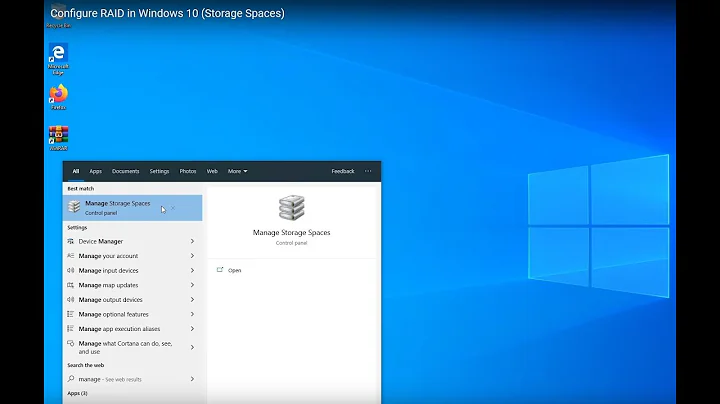Which RAID Level Should We Run For Virtual Machine Storage
Solution 1
Generally I'd expect Raid 10 to show a decent performance boost over Raid 5, but the answer to any question like this is "Test it yourself and find out, because it depends on your exact circumstances, so no one here can give you a definitive answer".
Solution 2
My rule is RAID 10 everywhere, anything else is a compromise - not that I don't have to, or choose to make compromises but my default is always R10 - great protection and performance.
Solution 3
We are talking up to 100% faster (and more!) in terms of RAID modes.
RAID write penalities (for one write IO bing issued to the host - how many disk (read and write) IOs have to be issued to the disks at least):
- RAID 10 write penalty: 1
- RAID 5 write penalty: 4
- RAID 6 write penalty: 6
It should be noted that if your application and file system is tuned for the proper block size of your RAID stride then RAID5 and RAID6 can even outperform RAID10 given the same number of spindles on write-heavy workloads.
Related videos on Youtube
Justin
Updated on September 18, 2022Comments
-
Justin almost 2 years
We just ordered a server which we are going to use as storage for our virtual machine environment. Basically it will work as a block level storage device running iSCSI to each hypervisor.
The server has (12) 500GB 7200RPM SATA 3/GBs drives with a PERC H700 controller with 512MB of onboard cache.
Which RAID level should we run? We are debating either RAID 5 or RAID 10. RAID 5 provides additional storage capacity, but we have read its slower than RAID 10, and not as fault tolerant. Any real idea how much faster RAID 10 is over RAID 5? Are we talking 10%, 20%, 50%, or 100% faster?
Basically, we want the highest performing solution.
-
 Admin almost 13 yearsJust how many Virtual machines are you expecting to service? How much bandwidth do they need? What are the expected number of IO operations per second? Without this information the answers here are pretty meaningless. If you are serving a few VMs with high bandwidth requirements, one big RAID 10 array might be best. If you are serving 50 VMs with more emphasis on IOps, load balancing them over six 2 drive RAID 1 arrays might be more appropriate.
Admin almost 13 yearsJust how many Virtual machines are you expecting to service? How much bandwidth do they need? What are the expected number of IO operations per second? Without this information the answers here are pretty meaningless. If you are serving a few VMs with high bandwidth requirements, one big RAID 10 array might be best. If you are serving 50 VMs with more emphasis on IOps, load balancing them over six 2 drive RAID 1 arrays might be more appropriate.
-
-
Justin almost 13 yearsWhat tools are used to benchmark IO performance? This is on Linux of course.
-
pfo almost 13 yearsTo name a few: FIO from the great Jens Axboe, iometer, ioping,dbench, etc. etc.
-
Mitch S almost 13 yearsbonnie++ is superb for performance tests also consider run ZCAV tests to see zoned angular velocity
-
jftuga almost 13 yearsWhat about for an arroy of SSDs? Is RAID-10 overkill in this scenario?
-
Chopper3 almost 13 yearsThe problem with using any of the kinds of RAID where writes are overall evenly balanced across disks (as they are with levels 1, 5, 6 and 10 is that as each disk is written to inherently almost exactly the same amount then if they're the same make/model of disk then logic suggests that they'll all fail at almost exactly the same time. This is because the SSDs wear out when written to, at pretty much the same rate. Ironically an older, more out of date level such as R3 would be 'better' for this as you'd kill the parity disk first but could swap that more safely.




